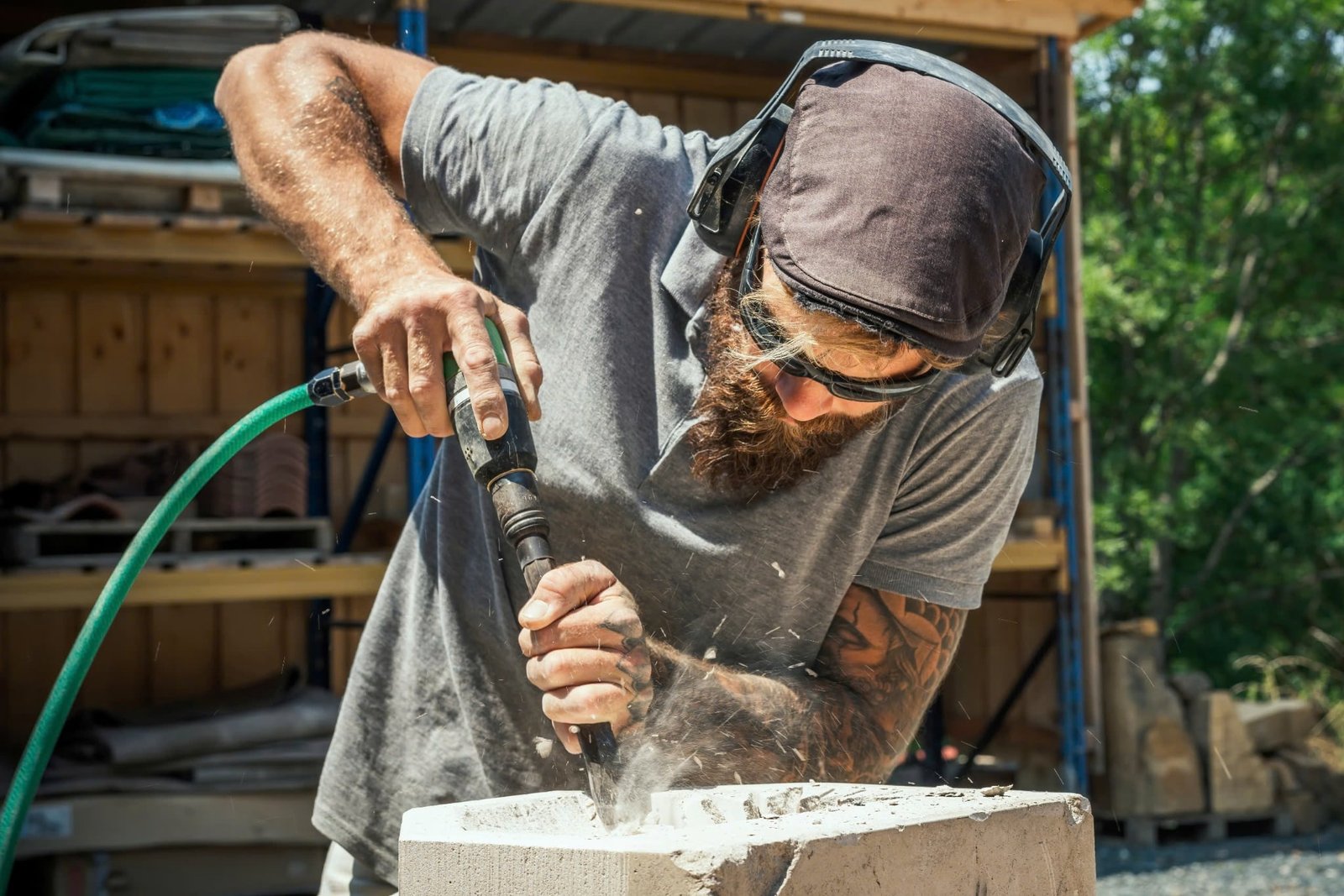
Measuring for granite countertops are one of the most important steps in the countertop installation process.
Measuring for granite countertops are one of the most important steps in the countertop installation process. Accurate measurements ensure you order the correct amount of material, stay within budget, and avoid costly mistakes during cutting and installation. Whether you’re preparing for a kitchen remodel or upgrading a bathroom vanity, understanding how to measure granite countertops in both linear feet and square feet is essential.
In this guide, we’ll break down how to measure like a pro and what to consider when calculating granite slab needs.

What Is a Granite Countertop?
Before we dive into measurements, let’s clarify what a granite countertop is. A granite countertop is a slab of natural stone that is cut, polished, and installed on kitchen or bathroom surfaces. Known for its durability, natural beauty, and heat resistance, granite remains one of the most popular countertop choices among homeowners.
👉 What Is a Granite Countertop?

Why Accurate Measurement Matters
Granite is typically sold by the square foot, while some installation services may quote by linear foot. Measuring correctly helps:
- Estimate granite countertop prices
- Avoid under- or over-ordering
- Plan for countertop installation
- Account for cuts, waste, and seams
- Get an accurate quote from your fabricator
Key Terms: Square Foot vs. Linear Foot
Square Feet (sq ft):
This is the area measurement used to calculate how much stone you need. It’s determined by multiplying length × width.
Linear Feet (lf):
This measures the length of the countertop (along the wall) and is typically used for pricing prefabricated countertop pieces.
Granite slabs are priced based on square footage, so you’ll need to convert linear feet into square feet if your supplier provides only one format.
Step-by-Step: How to Measure Square Footage for Granite Countertops
Step 1: Sketch Your Countertop Layout
Draw a simple diagram of your kitchen countertop or bathroom vanity, including all sections that require granite. Include:
- Main countertop runs
- Islands or peninsulas
- Backsplash areas
- Overhangs or drop-downs
- Cutouts for sinks, cooktops, or faucets
This diagram will help you break your countertop into manageable rectangles or L-shapes.
Step 2: Measure Each Section
Use a tape measure and write down the length and depth (front to back) of each section.
💡 Standard countertop depth is 25.5 inches (2.125 feet) to accommodate cabinets.
Convert inches to feet by dividing by 12.
For example:
60 inches ÷ 12 = 5 feet
Step 3: Calculate Square Feet per Section
Multiply the length × width (in feet) to get the square footage of each section.
Example:
If your countertop section is 5 ft (60 in) long and 2.125 ft (25.5 in) deep:
5 × 2.125 = 10.625 square feet
Repeat for each section and total the results.
Step 4: Add for Overhangs and Backsplashes
If your granite countertop design includes an overhang or full-height backsplash, measure those areas separately and include them in your square footage calculation.
- Standard overhang: 1–1.5 inches
- Full-height backsplash: Typically 4–6 inches tall and same length as the counter
Step 5: Include Waste Allowance
Always add 10–15% for waste, cuts, or future repairs.
If your total is 45 sq ft, add 15%:
45 × 1.15 = 51.75 square feet needed
Measuring for Islands and L-Shapes
Kitchen Islands:
Measure length × width to get the square footage.
A 6 ft x 3 ft island = 18 sq ft
L-Shaped Counters:
Break them into two rectangles and calculate each separately, then sum them up.
Estimating Linear Feet
If your contractor needs measurements in linear feet, measure only the length of the front edge (ignore the depth). Add up all the lengths for each counter run.
For pricing prefab options, linear feet help estimate cost but always confirm if the stone provider uses square or linear pricing.
Example Measurement Breakdown
| Area | Length (in) | Width (in) | Sq Ft |
|---|---|---|---|
| Main Countertop Run | 96 | 25.5 | 17.0 |
| L-Section | 60 | 25.5 | 10.6 |
| Island | 72 | 36 | 18.0 |
| Backsplash | 156 | 4 | 4.3 |
| Subtotal | 49.9 | ||
| +15% Waste | 7.5 | ||
| Total Granite Needed | 57.4 sq ft |
Helpful Tips When Measuring
- Always round up to the nearest square foot
- Use graph paper to scale your drawing
- Account for countertop thickness (typically 2 or 3 cm)
- Include cutout dimensions for sinks but don’t subtract them from total area
- If using granite slabs, confirm standard slab size from your supplier (typically 105″ x 54″)
What’s Next After Measuring?
Once you have your measurements:
- Compare granite countertop colors and edge profiles
- Get quotes based on your square footage
- Choose a reputable countertop installation company
- Schedule a template visit if needed
- Prepare for installation
👉 How to Install Granite Countertop?
👉 How to Install Granite Countertop Kitchen and Bathroom?
Granite Countertop Prices Per Square Foot
The average price of granite (material + install) is $40–$100 per square foot, depending on:
- Stone quality and origin
- Rarity of granite countertop colors
- Edge profile (standard vs. decorative)
- Finish (polished, honed, leathered)
- Local labor rates
Measuring accurately helps you get realistic granite countertop prices without surprises.
Final Thoughts
Knowing how to measure for granite countertops in square feet or linear feet gives you full control over budgeting, purchasing, and designing your dream kitchen countertop or bathroom vanity. The process is simple when broken into steps: sketch, measure, calculate, and plan.
Whether you’re installing a sleek modern granite slab or a classic speckled finish, preparation is key to a successful and stress-free renovation.

